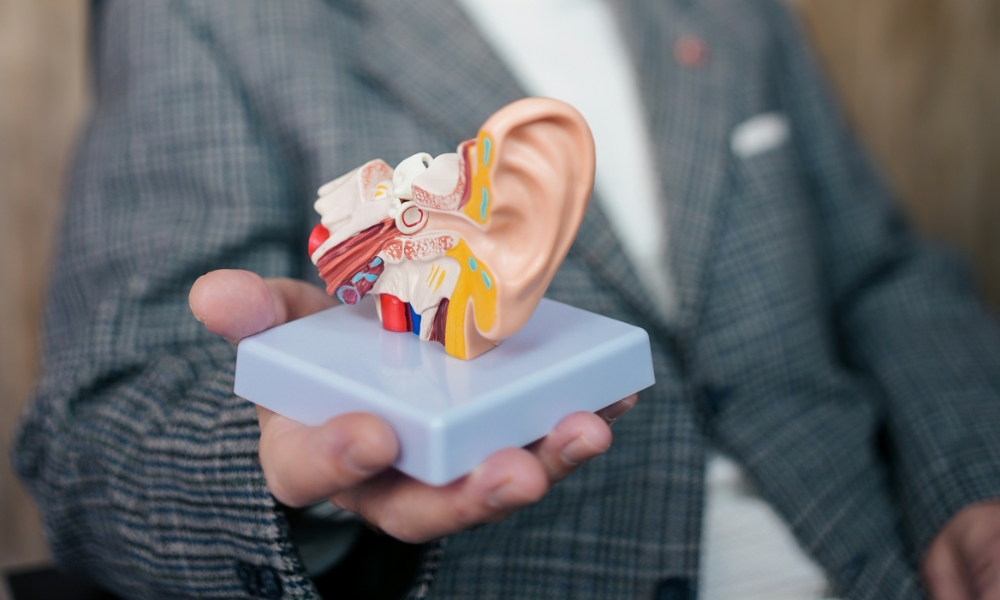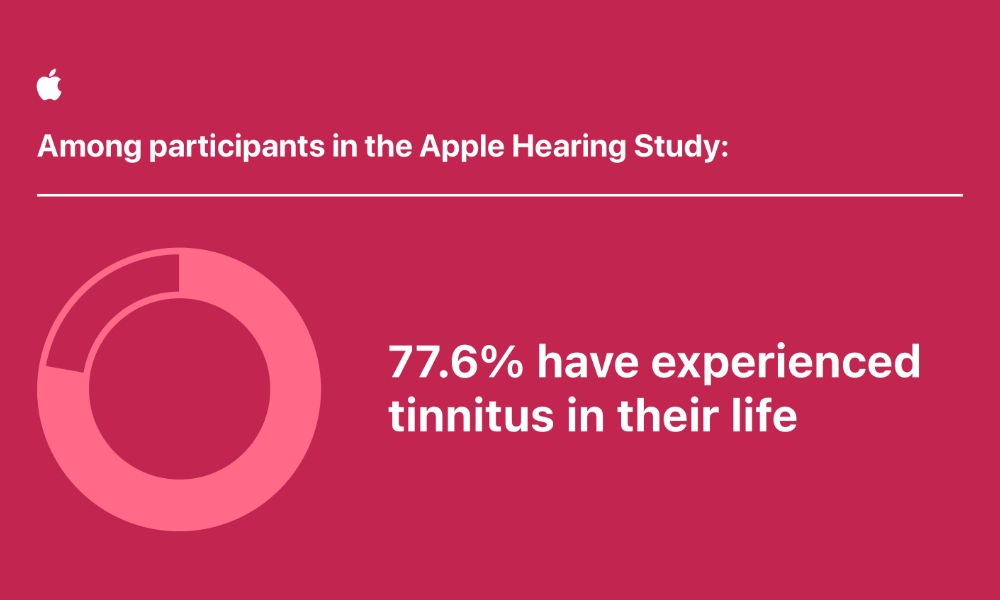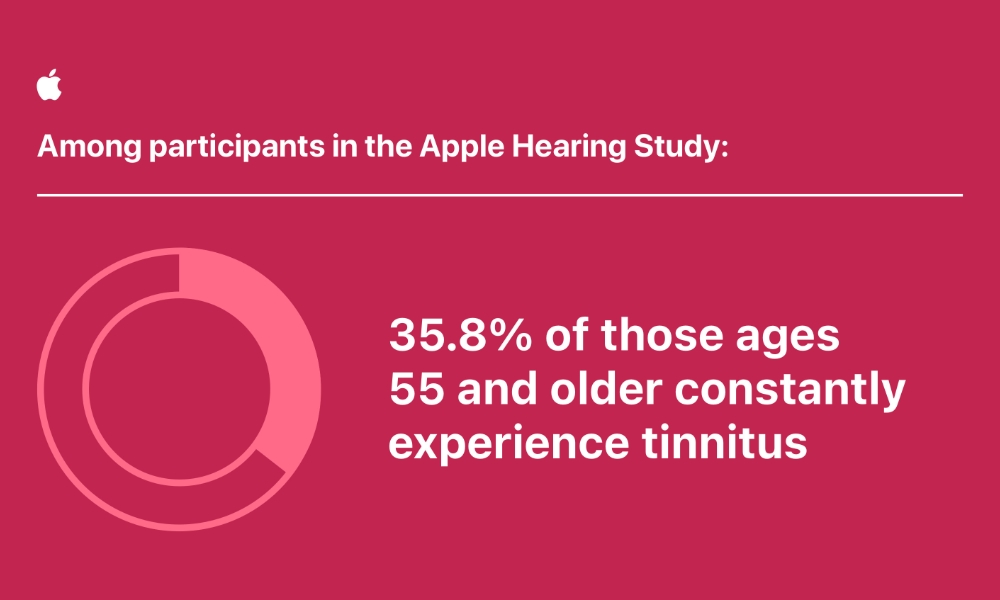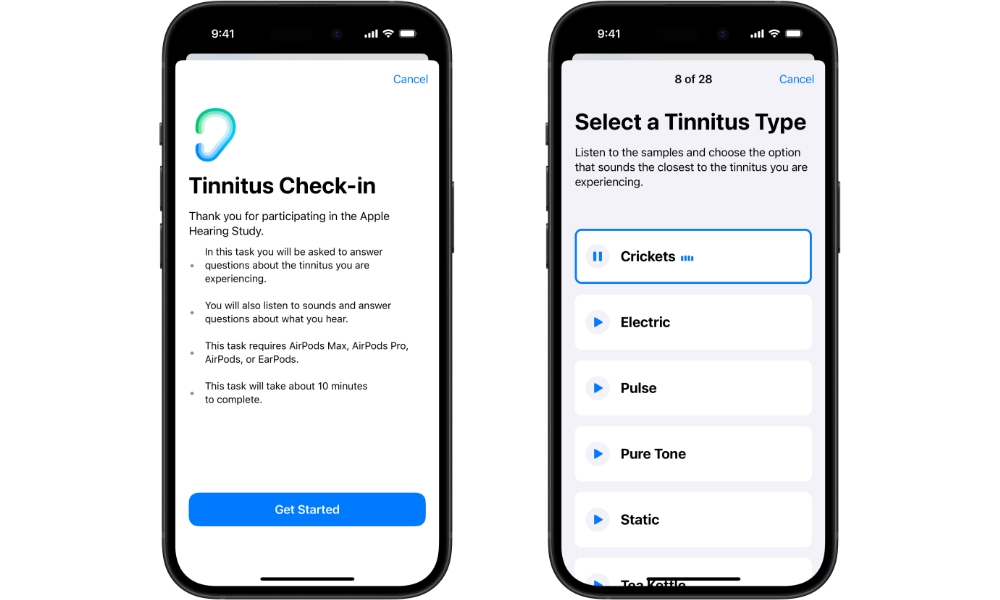Do You Experience Tinnitus? Apple’s Hearing Study Shows You’re Not Alone
 Credit: Yunus Tug / Unsplash+
Credit: Yunus Tug / Unsplash+
Toggle Dark Mode
Five years ago, Apple released a new Research app alongside the Apple Watch Series 5, accompanied by three landmark health studies that sought to help medical researchers gain new insight into women’s health, heart and movement, and hearing.
While all three have undoubtedly produced valuable results, the hearing study is the one we hear about the most often — probably those findings most impact our everyday lives.
For example, last year, researchers shared how many of us live with too much noise. Data collected from the Apple Watches of about 130,000 volunteers over three years looked at “noise pollution” and found that one-third of Americans are exposed to excessive noise levels nearly every day — levels that can not only damage hearing but also cause other mental and physical health problems.
Now, Apple is sharing some new insights researchers have gleaned from the Hearing Study. In this case, the widespread and serious impact of tinnitus.
Tinnitus is a broad term that refers to the perception of sounds that other people can’t hear. It’s most commonly experienced as “a ringing in the ears,” but it can also take different forms. Some people experience it only occasionally, such as when fatigued, while others have chronic tinnitus that can seriously affect their quality of life.
To better understand tinnitus, the team of researchers at the University of Michigan undertook one of the largest surveys to date. They reviewed more than 160,000 participants’ responses to survey questions and used app-based assessments to describe their experiences with tinnitus.

The results showed the condition to be more widespread than many had believed. Among the participants, which were considered a representative sample of the population, 77.6 percent have experienced tinnitus at least once in their lives, and roughly 15 percent experience it daily.
Roughly 15 percent of our participants experience tinnitus daily. Tinnitus is something that can have a large impact on a person’s life. The trends that we’re learning through the Apple Hearing Study about people’s experience with tinnitus can help us better understand the groups most at risk, which can in turn help guide efforts to reduce the impacts associated with it.Rick Neitzel, University of Michigan School of Public Health’s professor of environmental health sciences
Unlike fine wines, most people don’t find their health improves with age, so it’s probably a bit less surprising that those 55 and over experience tinnitus three times more regularly than those between the ages of 18 and 34. However, over a third of participants (35.8%) aged 55 and older reported constantly experiencing tinnitus. That’s a ringing or other annoying sound in the ears that never goes away. By comparison, only 14.7 percent of the entire sample group reported constant tinnitus.

Interestingly, although a slightly higher number of male participants (2.7%) reported experiencing tinnitus daily compared to female participants, more men (4.8%) said they’d never experienced it at all. Among those who experienced constant tinnitus, male participants were ahead by 6.8 percent.
Study participants who reported serious enough tinnitus to require management found that noise machines (28%), nature sounds (23.7%), and meditation (12.2%) helped. A few, less than 2.1 percent, chose cognitive and behavioral therapy to manage the condition.
While tinnitus is complex and can have many causes, study participants most commonly attributed their tinnitus to “noise trauma,” or exposure to excessively high levels of noise (20.3%), while stress was in second place at 7.7 percent.
Most participants reported brief episodes of tinnitus, and the majority said it was faint. 34.4 percent of respondents said it was noticeable, while 8.8 percent found it “very loud or ultra loud.” Ten percent said it was serious enough to prevent them from hearing clearly.
Since it’s hard for anyone outside of your head to understand how tinnitus is affecting you or even what it sounds like, researchers developed an iPhone app with a diagnostic sound test to help participants characterize their experience of tinnitus by listening to sounds through AirPods and answering questions about what they hear.

Through the app, a significant majority of participants described their tinnitus as a pure tone (78.5%) or white noise (17.4%). The pure tone was most commonly reported as a pitch at 9 kilohertz or above, “similar to the tones in a songbird’s call.” 83.5 percent described it as a single tone, while 16.5 percent heard it as a “teakettle tone,” more akin to a high-pitched whistling sound.
Those who experienced tinnitus as white noise described it as a static tone (57.7%), a cricket tone (21.7%), an electronic tone (11.2%), or a pulse tone (9.4%).
Conducted in collaboration with the University of Michigan, the Apple Hearing Study advances the understanding of sound exposure and its impact on hearing health. Researchers have already collected about 400 million hours of calculated environmental sound levels supplemented with lifestyle surveys to analyze how sound exposure affects hearing, stress, and hearing-related aspects of health. Study data will also be shared with the World Health Organization as a contribution to its Make Listening Safe initiative.Apple
Along with the results, Apple adds some tips on how its products and technologies can help, including using the Noise app on the Apple Watch to receive alerts of potentially harmful environmental noise levels, monitoring how much environmental sounds are reduced when wearing AirPods Pro and AirPods Max, taking advantage of Active Noise Cancellation and Loud Sound Reduction modes in AirPods Pro, and setting headphone volume limits on the iPhone.







